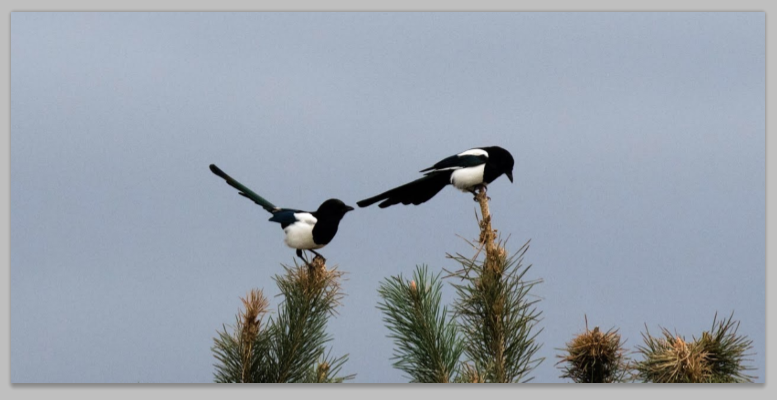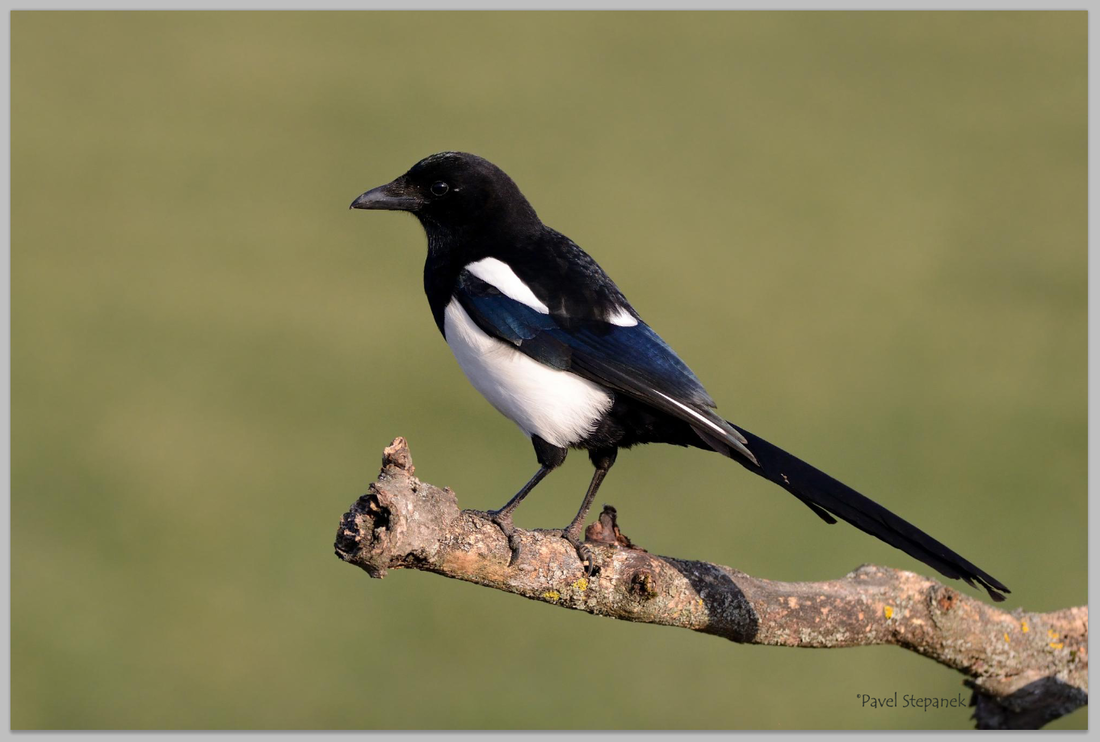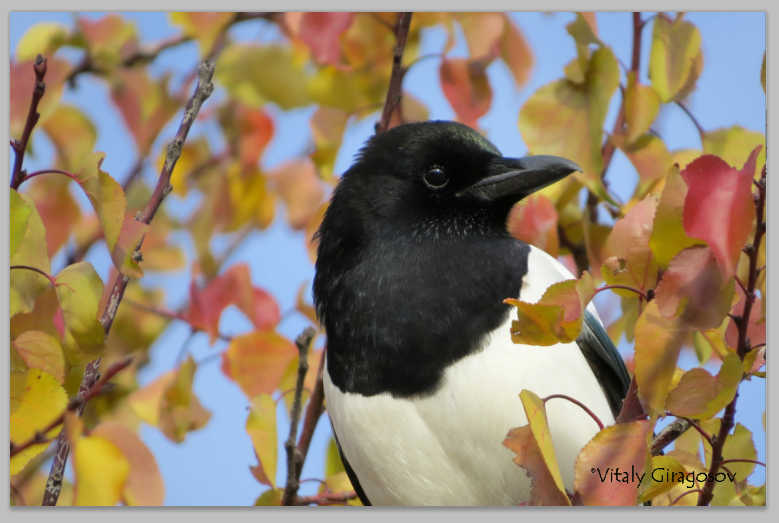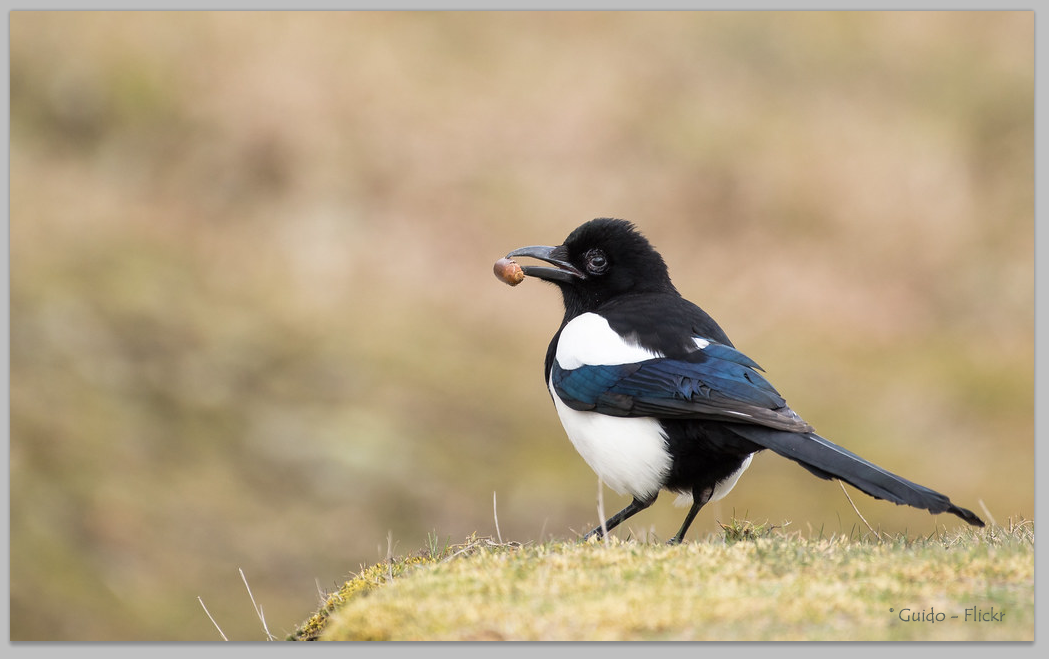|
Once again I sit watching my pair of magpies trying to build a nest in the cherry tree, this is their fourth attempt: they are nothing if not persistent but each time they have abandoned the build and revert to building in the trees on the western boundary. I wonder what fascination this tree holds that they try each year without success, I love to watch them and listen to their sometimes raucous chatter, they are bright and curious and inquisitive but definitely not one of the best loved. birds in the countryside. How did such a common member of the crow family become so vilified and is there any truth behind their reputation? The magpie - Pica pica - is a divisive bird that can provoke strong views, some people love them, some people hate them, but everyone seems to have an opinion or a superstition and to be fair they are probably a little misunderstood. If magpies were a rare species, people would travel miles just to see them, their reputation belies that fact that they are a most exquisitely beautiful bird, with that lovely long tail and an iridescence to the plumage that shimmers and catches the light on any bright day. Although known for centuries in the UK, the magpie appears to have arrived in Ireland sometime in the late seventeenth century; they used to be called just 'Pie', meaning black and white or pied but around the same time the prefix 'Mag' was added meaning 'a chatterer'. It seems that a small flock of birds arrived 'on a stronge blacke easterly wind' to the far south of Co. Wexford where the chronicles of the time noted 'tis verily believed, none having ever been seen in Ireland before'. There cannot have been many but they settled and bred and as they say - the rest is history. Many people report that they are now everywhere and their numbers should be culled. Indeed, they can now be found in every county, however, the Survey organised by BirdWatch Ireland revealed that despite the apparent abundance the average count is only five per square kilometre, far less than the Blackbird, Wren and Swallow and no-one complains about their numbers. Magpies are Green listed, they are common and widespread though the population did decline between 1998 and 2010 for reasons unknown. The magpie is a species of crow - the corvid family; intelligent birds which are highly social in nature. They are unlikely to be confused with any other species in Ireland as they are boldly marked in what looks like an elegant black and white outfit with a very long tail. What looks black is actually infused with an iridescent deep green with flashes of a slick petrol-blue sheen on the wing feathers and there is a green gloss to the tail, that fans out like art-deco rays. They sport stubby wings, a short, stout, black beak and longish legs which are used for both walking, hopping and bounding. They stroll, and strut, and swagger as they peer and prod at the ground foraging for food. Some of the crow family, such as rooks, build in social groups but unlike the other members magpies are solitary nesters, they build large (almost a square metre in size), domed nests high up in the trees that are obvious during the winter but once most trees have budded, their constructions becomes hidden from view. Usually nesting pairs construct a new nest each year although it is not unusual for them to reuse last year's nest and it is not unknown for other bird species, such as kestrels or long-eared owls, to take over the use of nests they have abandoned. They will nest and feed in various habitats including woodland, scrubland, rural gardens as well as urban areas and as magpies are non-migratory, breeding pairs usually remain within their territories, but non-breeding birds wander more widely though it’s rare for one to ever travel more than 10km from where it was hatched. Magpies take a wide variety of food types, being very opportunistic and omnivorous in their feeding habitats; eating anything edible they can scavenge. They are known to cache food, storing items when there is an excess for retrieval later, foods that include insects, earthworms, fruits, seeds and nuts, carrion, refuse and kitchen scrapes and they will raid bird tables and waste bins. Magpies are also predatory birds who raid the nests of smaller species in the summer and eat their eggs and young. This is where the one of the problems start. It is true that magpies will take baby birds and destroy eggs, but they are not alone in this. Great Spotted Woodpeckers will peck into a nest box and remove and eat all the occupants, Jays have been known catch fledglings and pummel them to death before being taken back to their young; even rats and squirrels will take chicks if they can gain access to the nest site. Perhaps it is the sheer visibility and raucous warning cackles of the magpie that makes them so noticeable and yes, they have increased in numbers, especially in cities, where there are more sources of food and waste. Magpies have been here for 350 years but they have been in the UK for millenia and have presumably been eating songbird chicks all this time. The RSPB and the BTO have had data from a continuous 35 years of study and concluded that there was no relationship between the increase in magpie numbers and the decrease in the number of songbirds and as any scientist will tell you - Correlation is not Causation'. The study showed that between 1966 and 1986, the number of magpies in the UK increased steadily by around 5% per year but this had no obvious effect on the nesting success of any of the songbird species in the study and there has been a decrease in magpie numbers since, a 6% loss was recorded during 2015/16. If we are really concerned as to why our songbirds have declined, the magpie is a conspicuous and easy target but they, along with sparrowhawks (who also get bad press) are not the reason. The biggest threat to our birdlife is habitat destruction; the way that hedgerows have been grubbed up to make larger and larger fields or replaced by fences or with non native hedges that have little use for wildlife, or the felling of trees to satisfy insurance companies or make roadside hedges easier to cut. We need to look at the use of agricultural and garden herbicides which diminish the range and diversity of plants and the insects that feed upon them, which many songbirds depend on to feed their young. We need to rethink our relentless use of pesticides which kill indiscriminately, not just the insects that they are designed for. For the loss of songbirds, we should look to ourselves first; it should be on our consciences and not offset onto others. Magpies haunt the world of folklore; sometimes they appear as a sinister omen; a lone magpie is considered to be especially ominous, the refrain 'One for Sorrow' springs to mind but in other cultures they are seen as the bringers of good luck and prosperity. Master Jewel Thief - Centuries of folklore placed the magpie at the centre of any daring theft that included the likes a shiny rings, lockets and coins. It was widely believed that magpies had a compulsive urge to steal sparkly things for their nests, not stealing out of necessity but purely for vanity - the 'thieving magpie'. Check in one of their nests, we were told, and they will contain shiny trinkets such as rings and jewels but there's no credible evidence that this is so. Exhaustive tests carried out in 2014 by the Centre for Research in Animal Behaviour found that magpies were not only uninterested in shiny things but they were rather nervous of them, to the extent that they reduced their feeding time in areas where any small, shiny objects were placed. The Magpie Funeral - Historical records of magpies show the strange behaviour that is known as a 'magpie funeral'. The reports state that when a magpie dies, other magpies will travel to the spot and sit over the body for a short period of time. It is well documented in literature and by many respected ornithologists. Cornell University has recorded gatherings of raucously calling magpies that may last for 10 to 15 minutes before the birds disperse and fly off silently. A programme by Living on Earth included an interview with magpie researcher Chuck Trost, who posits that the magpies are probably not paying their respects. 'I think what it is, is they’re trying to see who it is because they know each other, magpies know each other, and whenever there’s a dead magpie, that means there’s an opening in the social system. And if you’re a submissive magpie, maybe you can move up one notch.' Reporter Guy Hand respects the science. But given our history with the bird, he also suggests that maybe we should be open to other interpretations: 'If we’re so quick to assign the worst human traits to magpies, can’t we just allow them just a little room for reverential reflection?' Harbinger of ill fortune - There are plenty of old traditions that pay deference to the magpie to ward off bad luck; coming across a lone magpie the correct procedure, apparently, is to salute and say 'Hello Mr Magpie'. The really superstitious among you can strengthen this by spitting three times over your shoulders and flapping your arms like wings. Magpies were often associated with witchcraft; people used to cross themselves when they saw one, believing also that if one was seen near a window death could not be far behind. In historical times, the French had a more positive view of magpies and honoured them by tying bundles of evergreen shrubs, such as laurel and heath, high in a tree. This was in remembrance of when chattering magpies alerted people to the presence of predators, such as wolves, close to their livestock. Symbolism - Some spiritualists consider magpies a symbol that act as a reminder that obsession with the material world will not nurture your spiritual path. And on that note, whatever your persuasion on magpies I suggest that perhaps it is time to take another look, forget the folklore and the prejudices, just watch the antics of this remarkable bird. I find them a compelling presence in my garden and it is one that has no shortage of songbirds
6 Comments
|
WildEdges
A haven of quiet countryside highlighting issues affecting the natural world. Categories
All
|









 RSS Feed
RSS Feed